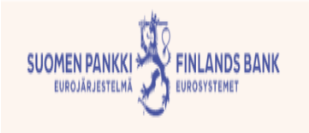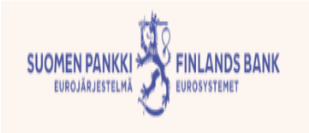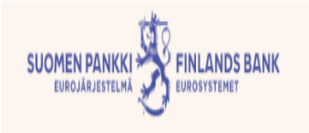Governor Olli Rehn: Interview in Börsen-Zeitung
Mr Rehn, has the danger of a recession in the euro area been averted?
The economic data in the first weeks of the new year were better than expected and risks to growth and inflation are more balanced. Growth in the euro area is slowing and the outlook is still affected by the energy crisis. But it indeed seems that a recession can be avoided, ceteris paribus.
The EU Commission recently raised its growth forecast for the euro area this year from 0.3% to 0.9%. Will the ECB follow in March? The ECB projections in December had predicted 0.5%.
Growth will probably be somewhat stronger than expected in December. A figure somewhere around 1.0% seems realistic. But the most important thing is that we have stayed within the positive territory. We expect an economic rebound in the course of this year and next year.
And what does a better growth outlook mean for inflation? Does this mean that inflation will remain high and more persistent for longer than expected?
More growth tends to lead to more inflation if the economy is running to its full capacity. But inflation developments depend in detail on several factors. As far as inflation in the euro area over the past two years is concerned, there was one main driver and one anchor. The inflation driver was the very high energy prices. The anchor was the relatively moderate wage settlements until recently.
And that is changing now? Energy prices have fallen, while wage settlements are rising.
The decline in energy prices is encouraging. But there is a need for caution: First, energy prices are very volatile; so they can go back the other way very quickly. Second, there is a certain stickiness and asymmetry. Energy price inflation picks up very quickly, but it takes longer to decline. Wage developments are currently fundamental to inflation dynamics.
And how much do you worry then about wage growth picking up?
Wage growth is picking up. But so far it is mainly about compensating for past losses in real purchasing power, not because of higher inflation expectations for the future. I find it reassuring that wage settlements are higher for this year but then decline in 2024 in line with ECB’s inflation forecasts. This can be seen in Finland as well as in Germany, if you look at the wage settlement in the German metal industry, for example. I don't see a profound wage-price spiral so far.
In the public sector in Germany, however, the demand is now already for 10.5% more pay. Is that not an alarm signal?
The demand is not usually the outcome. But we have to be mindful and monitor the wage development very closely. It is crucial that wages only rise so much that the competitiveness of the economy is maintained and that a wage-price spiral is avoided. Otherwise we might have to act more forcefully if necessary.
But all in all, you say that the outlook for inflation has improved compared to December, as it has for growth?
It is fair to say that the situation has improved for both growth and inflation and that the risks around the baseline scenario are more balanced than in December, with upside risks continuing to predominate for inflation.
We owe the improved situation in the energy markets to luck and political action. Luck, because the winter in Europe was quite mild. At the same time, policy action ensured that, for example, Russian gas was quickly replaced by other forms of energy. But people also played their part because they saved energy. That was essential for overcoming the acute energy crisis.
A little more growth, a little less inflation - that could also be reflected in the ECB's March projections. What would then be the implications for monetary policy? Would the key interest rates then not have to be raised as aggressively as signalled in December?
We are still on course and will stay the course in monetary policy. Headline inflation has fallen recently and there is some stabilisation in the underlying price pressures, including in the core inflation rate excluding energy and food. But both headline and core rates remain excessively high. We therefore need to do whatever it takes to keep inflation expectations anchored at our inflation target. We need to raise interest rates further now and then maintain a restrictive stance long enough to tighten financing conditions and sufficiently dampen aggregate demand.
And that means in concrete terms?
We have stated our clear intention for the March meeting to raise policy rates again by 50 basis points. In March we will get new projections and we will have more data. Then we will analyse what happens after that. As things stand, I assume that we will reach the terminal rate in the course of the summer.
So that means that interest rate hikes will continue after March? Some observers speculate that it could be over by then.
With inflation so high, further rate hikes beyond March seem likely, logical and appropriate. As I said, it is important that we reach the restrictive level and then stay at that level for some time.
So the current level of interest rates is not yet restrictive, it is not yet slowing down the economy?
That is a fair question. But the answer is complicated. The so-called neutral interest rate is not a static concept, but is based on many assumptions and judgements. Monetary policy is as much art as science. I would say we are about to reach the restrictive level soon.
With a view to inflation expectations, is it conceivable to stop raising interest rates before the core rate has also peaked and declines sustainably?
It is hard to imagine that we could stop raising interest rates as long as core inflation continues to rise and is so high. But I assume that the core inflation rate will also decline in the course of the year.
Are you actually more worried about the level of inflation or the persistence?
Both are major problems. But this is especially true for the combination. High and persistent inflation is poison for the economy. That is why we need to fight inflation with strong determination.
And is an increase in the deposit rate from the current 2.5% to 3.25% or 3.5%, as many economists and market participants currently expect as the peak in the interest rate cycle, enough? Your colleague Mario Centeno has said that in March the ECB could be clearer with statements on the terminal rate.
There is a lot of uncertainty about the neutral interest rate and about inflation dynamics. This makes it very difficult to make precise statements in advance about the exact interest rate level that will bring inflation back to our target of 2.0% in the medium term. As I said, I expect that core inflation will also decline in the course of the year. But we also have to be prepared for delays or disappointments. That is why we need stamina and persistence in fighting inflation.
Against this background, how concerned are you about the expectations on the financial markets? Many players are even speculating on interest rate cuts in the near future, possibly this year. That tends to lead to an easing of financing conditions.
We have communicated our intention very clearly and nobody should doubt that. We will raise interest rates and then keep them at a high and restrictive level until we see a clear and sustained decline in inflation. We will not exaggerate for the sake of exaggeration. But we should also not rush to start discussing interest rate cuts.
So you would agree that history warns against a pivot too soon?
Market participants and economic agents appreciate consistency and stability. Now it is our task to show consistency and persistence in fighting inflation.
And that also means, when in doubt, rather doing too much and raising interest rates too much than doing too little and making monetary policy too loose?
We must by no means let up too soon. That is one of the key lessons of the late 1970s and early 1980s. In the late 1970s, after the Islamic Revolution in Iran and the second oil shock, the Fed initially thought it would be able to control and contain inflation. But there was a second wave of inflation because inflation expectations were no longer anchored. The result was galloping inflation. The Fed under Paul Volcker responded to this with a shock therapy - with interest rates at 20%, which led to mass unemployment and low growth. Times are different, but still, we as the Governing Council must avoid such shock therapy and instead act pre-emptively. We need to raise our interest rates preventively and continuously to keep inflation expectations under control and prevent a wage-price spiral. That may mean slightly lower growth now. But that is the better alternative to a shock therapy later on, including very high unemployment.
The reduction of bond holdings will also start in March. Critics complain that the pace, at 15 billion euros of balance sheet reduction per month, is slow and undermines the fight against inflation.
Our main instrument in fighting inflation are the policy rates. And we see that monetary policy is working. Inflation expectations have come down since we started raising interest rates. Now, as far as balance sheet reduction is concerned: we have decided to start cautiously. It is also about testing the markets.
And from July onwards, the pace will be increased?
It's still too early to judge. And we don't have to decide now. But of course it is also clear that the stock of assets has an effect on long-term interest rates.
To what extent do concerns about the consequences for the public finances of the euro area countries play a role in these considerations?
What you are saying sounds like fiscal dominance. We do not accept that and we do not practice it. Our primary mandate is price stability and we base our policy on that - and nothing else. If there are problems with monetary policy transmission in individual euro area countries, there are instruments like our new TPI. At the moment I don’t see any turbulence in corporate or government bonds. And if member states pursue responsible fiscal and economic policies, there should be no turbulence either.
Would the balance sheet reduction and the reduction of bond holdings be easier if there were more common fiscal policies and more funds at the euro area level? There is currently a discussion about an EU sovereignity fund in response to the US Inflation Reduction Act.
There is basically more at stake, namely the question of what the architecture of the economic and monetary union should optimally look like. In the short term, the rapid reform of the EU fiscal rules is crucial. The current set of rules, which I helped to develop as EU Commissioner, is very complex. I would be in favour of reforming and simplifying the rules in the direction of a debt anchor and a spending rule. And the EU Council should have the final say to build peer pressure.
But the reform is highly controversial and there is little progress.
I would plead to finance ministers to speed up the work on the reform. It would be important to reach an agreement in the first half of the year. Because then the budget plans for 2024 will be made and then the finance ministers need backing from rules. If there are no fiscal rules, spending and deficits are higher. The best thing would be reformed rules. If that doesn't work, we should go back to the current rules and apply them wisely.
There is also the concern that too much spending will exacerbate the inflation problem, right?
Of course, fiscal policy is important for monetary policy. In the Corona pandemic, we worked hand in hand to support the economy with quick and decisive measures. Now the same cooperation is needed in the fight against inflation. When monetary policy tightens financing conditions, it is crucial that fiscal policy does not at the same time loosen and stimulate the economy - especially when it is growing quite solidly.
And how worried are you that Europe's response to the US anti-inflation law will exacerbate this problem? As I said, this is also about new money pots.
The most important thing now is that we as Europeans stick to free trade and the single market. At the same time, we need a more goal-oriented industrial policy. In the struggle for strategic autonomy, however, it must always be about open strategic autonomy, not about isolation and protectionism. As far as new funds are concerned, we have the Recovery and Resilience Facility. I have always understood it more as a kind of investment fund that supports the structural transformation of the EU as an industrial location. We must continue to implement and use this. That is more important than new measures.





















































First, please LoginComment After ~